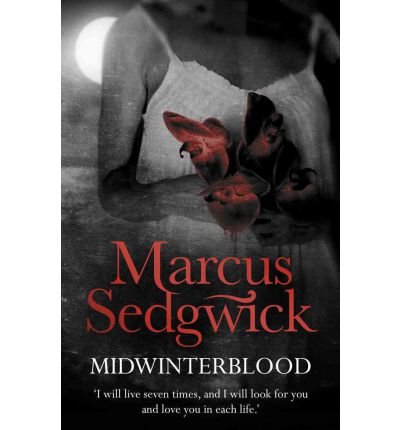Midwinterblood
Marcus Sedgwick always comes up with something interesting and Midwinterblood, short-listed for the Cilip Carnegie Medal 2013, is no exception. In this meticulously-crafted book, Eric and Merle play out variations on the themes of love, loss and sacrifice with the leitmotif of the hare – that symbol of resurrection – and the wicked man, sometimes called Tor, who symbolizes the destroyer and the triumph of the negative, weaving in and out of the seven interlinked stories.
Midwinterblood opens in 2073 and goes back through the centuries to the Bronze Age, where Eric and Merle’s story begins with a warrior king torn from his beloved queen and sacrificed to appease the gods. Their love takes many forms: brother and sister, old artist and young child, lovers torn apart by class differences. The setting is the mysterious island of Blessed and each story is distinct, of its period, and has a strange, almost mystical resonance. The strap-line says An epic tale of love, loss and sacrifice told over seven incarnations, seven interweaving stories and thousands of years, which about sums it up.
There are passages that echo Thomas Hardy, with Eric and Merle as the playthings of uncaring gods; touches of Beowulf in the 10th century story The Vampire; and something of Alan Garner’s mystical intensity. But this is really a book which defies description. I particularly liked The Painter, set in 1902, with its touching relationship between the child and the aged, once famous painter. And The Airman, set in 1944, where David parachutes out of his destroyed Spitfire and is taken in, reluctantly, by Eric, an island farmer. Eric knows that harbouring the enemy is not safe; inevitably, the Nazis will come. An outstanding young adult novel which should appeal to the thoughtful, the angst-ridden, the lovers of Gothic, and the supernatural.










